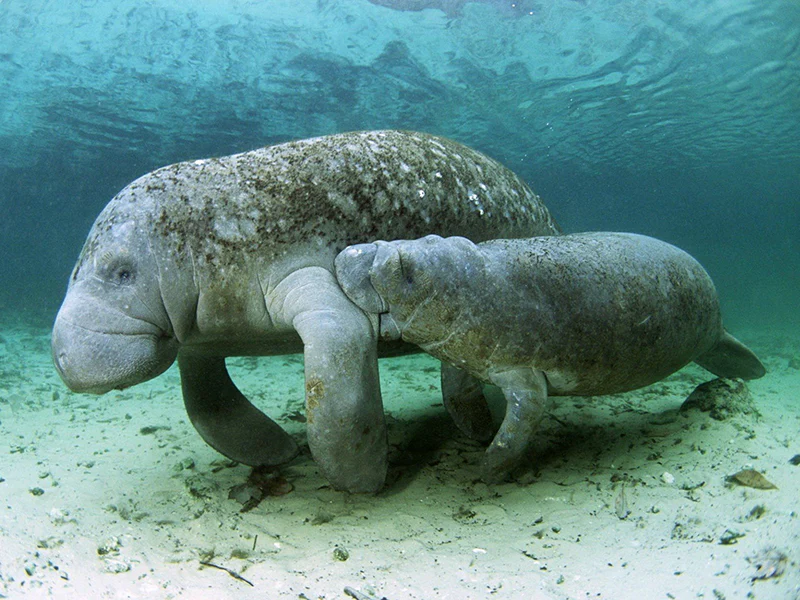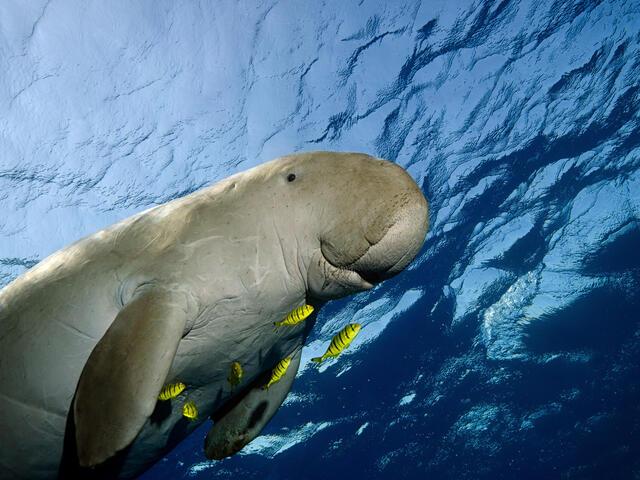Welcome to the first in a series of posts where we’ll be exploring the fascinating, and often vulnerable, wildlife of Australia, with a focus on the unique challenges and innovative solutions in conservation. We’re grateful for the support and expertise of our partner, Dr. Phil Tucak, who is instrumental in bringing you these insights. In this installment, we delve into the world of the dugong, a gentle marine mammal facing significant threats.
Dugong Facts:
– Lifespan: > 70 years
– Adult length: < 3 meters (10 feet)
– Adult weight: approximately 420 kilograms (930 pounds)
– Sexual maturity: Reached between 8 and 18 years of age
– Time between births: 2.4 to 7 years
– Gestation period: 13 to 15 months, one calf
Dugongs inhabit the shallow and warm coastal waters, with a significant presence along the Australian coastline from Shark Bay in Western Australia, northwards, and down to Moreton Bay in Queensland. However, their range extends far beyond Australia, encompassing 39 other countries and territories throughout the Indo-West Pacific. These gentle giants are intrinsically linked to the health of their environment. By grazing on seagrass, dugongs actively protect this vital habitat. Seagrass meadows, in turn, support a considerable proportion of the world’s fisheries, provide crucial coastal sediment stability, and even act as a significant carbon sink, sometimes storing carbon at rates exceeding those of rainforests. The health of this ecosystem is vital, and monitoring it is key. Sadly, this makes the dugong’s classification as vulnerable to extinction globally, according to the International Union for Conservation of Nature (IUCN) Red List, all the more concerning.
The dugong faces numerous threats, including boat strikes, the lingering impact of hunting (for meat and oil), and, most critically, the destruction of their seagrass habitat and food source. This habitat degradation is driven by coastal development, various coastal activities, pollution, and the overarching effects of climate change. While precise population counts are challenging, the Australian dugong population is estimated to be in the tens of thousands. An interesting fact that sets the dugong apart is its unique dietary status: it is the world’s only exclusively herbivorous marine mammal, although they will occasionally supplement their diet with invertebrates like jellyfish, sea squirts, and shellfish.
Protecting these vulnerable creatures requires modern approaches. Today, researchers employ techniques such as aerial surveys using drones equipped with high-resolution cameras, combined with the power of artificial intelligence (AI) data science. This AI technology helps automate the detection of dugongs within the vast amount of imagery collected, and it also extracts crucial information about the environmental conditions during the survey. This allows for more efficient data collection and analysis, providing valuable insights for conservation efforts.
To learn more: https://www.seagrasswatch.org
Article credits: Dr Phil Tucak, https://www.philtucak.com/
Reference: https://en.wikipedia.org/wiki/Dugong







